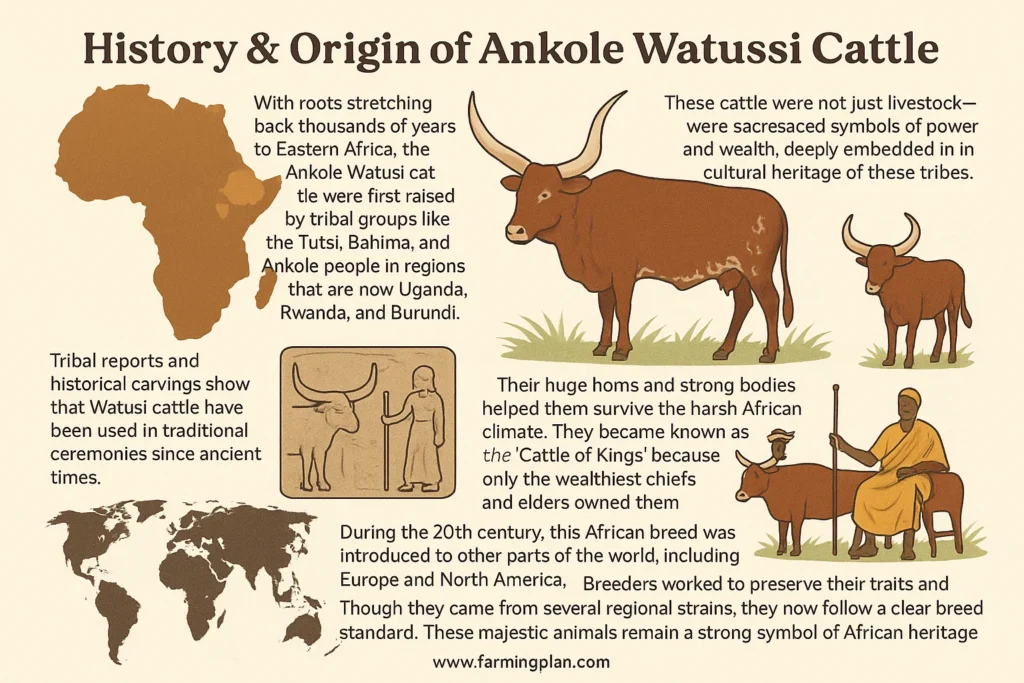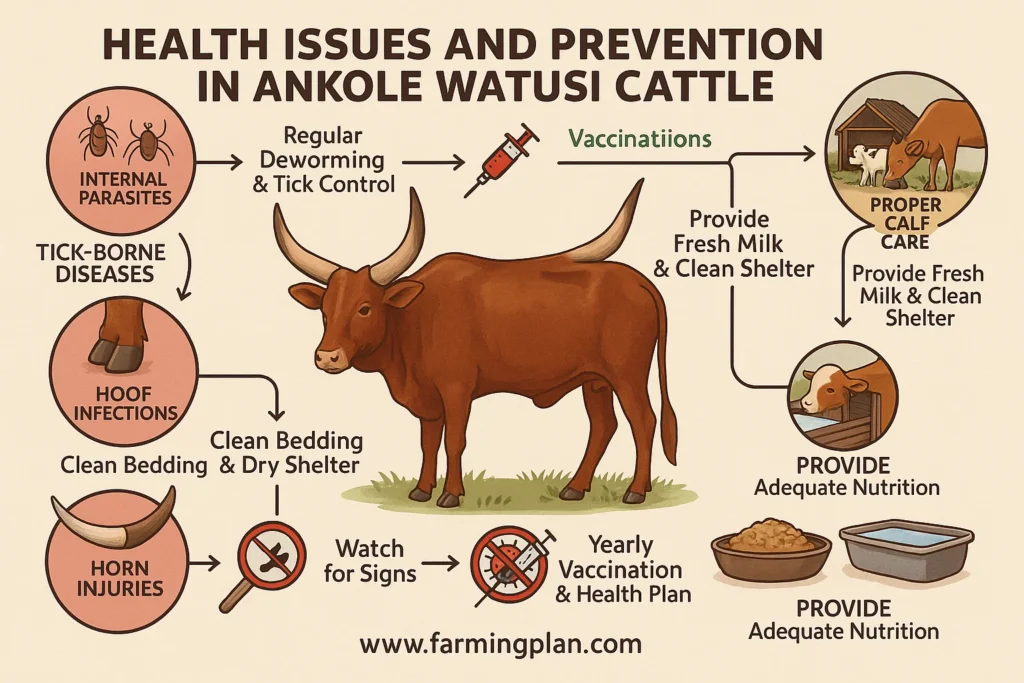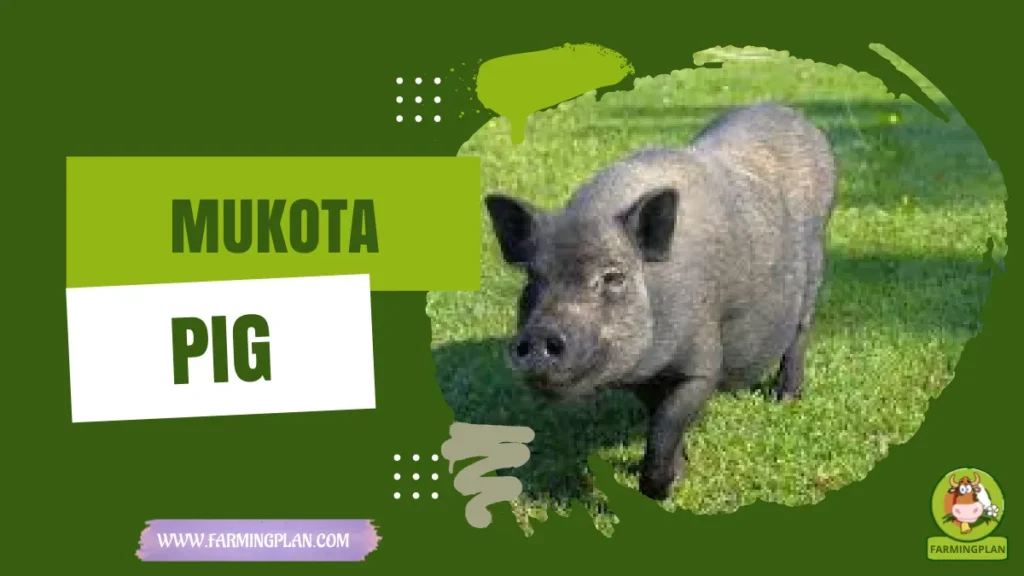Ankole Watusi Cattle, with their strikingly large horns, elegant appearance, and rich African heritage, are a breed that captivates the imagination. These regal animals, often referred to as the “Cattle of Kings” and “sacred animals”, stand out in the bovine kingdom. Their unique horn shape, calm temperament, and adaptability to hot climates make them more than just visually exciting animals—they are a living part of African tradition. In this guide, you’ll delve into their history, characteristics, care tips, and the reasons behind their global demand.

History & Origin of Ankole Watusi Cattle
The Ankole Watusi Cattle, with their roots stretching back thousands of years to Eastern Africa, were first raised by tribal groups like the Tutsi, Bahima, and Ankole people in regions that are now Uganda, Rwanda, and Burundi. These cattle were not just livestock—they were sacred symbols of power and wealth, deeply embedded in the cultural heritage of these tribes.
Tribal reports and historical carvings show that Watusi cattle have been used in traditional ceremonies since ancient times. Their huge horns and strong bodies helped them survive the harsh African climate. They became known as the “Cattle of Kings” because only the wealthiest chiefs and elders owned them.

During the 20th century, this African breed was introduced to other parts of the world, including Europe and North America. Breeders worked to preserve their traits and formed a single breed known today as the Ankole-Watusi. Though they came from several regional strains, they now follow a clear breed standard. These majestic animals remain a strong symbol of African heritage and pride.
Reads More: Bielefelder Kennhuhn Chicken: The Perfect Gentle and Productive Flock Addition
Ankole Watusi Cattle Characteristics
Ankole Watusi Cattle are easy to recognize thanks to their enormous horns. These horns can grow up to 8 feet from tip to tip and have the largest circumference of any cattle breed. Some bulls, like the famous CT Woodie, hold world records for horn size. The horns are not just for show. They help the cattle stay cool by circulating blood through the horn’s wide surface. Their shape is usually crescent or lyre-like, and they often curve upward in a stunning display.
These cattle are medium to large in size. Bulls weigh between 1,000 and 1,600 pounds, while cows weigh around 900 to 1,200 pounds. A noticeable neck hump adds to their strong look. Their backs have a straight topline, giving them a clean, upright posture. Ankole Watusi comes in a variety of colors. The dominant color is dark red, but you may also see them in white, black, or spotted patterns.
There are two main strains: the common strain, which has medium-sized horns, and the giant-horned strain, known for massive horn size. This African breed, known for its beauty, is also built to survive. It thrives in hot, dry climates and can graze on low-quality grass without losing health or strength. This adaptability makes them a reassuring choice for farmers and breeders in such environments.
Ankole Watusi Cattle Temperament and Behavior
Ankole Watusi Cattle are calm, gentle, and easy to manage, especially when raised with regular human contact. These herd animals enjoy being around others and rarely act out unless they feel threatened. Many owners describe them as peaceful and alert, making them perfect for both experienced farmers and beginners. Despite their massive horns, Ankole Watusi are not aggressive. In fact, they are known for being protective but not dangerous. If you treat them well, they’ll trust you and become loyal members of your cattle herd.
Because they come from African cattle breeds used to interacting with tribal communities, they are often relaxed around people. They can be trained to lead and follow simple routines. Some owners even show them at livestock exhibitions due to their striking appearance and steady behavior. If you plan to keep Ankole Watusi with other domestic cattle, they usually adapt well. Their social nature helps them form strong bonds within mixed herds.
Tip: Watusi cattle may look intimidating, but they’re some of the friendliest horned cattle you’ll ever meet. Daily care builds trust.
Food & Diet for Ankole Watusi Cattle
Ankole Watusi Cattle are easy keepers. They can thrive on low-quality forage, which makes them perfect for areas with dry grasslands or hot climates. Their digestive systems are built to handle poor pastures where other cattle might struggle. The main part of their diet includes grass, hay, and clean water. If you want to boost their weight or milk production, you can add grains like corn, oats, and barley.

Just keep it balanced. Overfeeding can lead to health problems. Watusi cattle don’t need high amounts of protein-rich feed. In fact, they often do better with light rations compared to commercial beef cattle. Salt licks and mineral blocks should always be available to support horn and bone strength.
For calves, fresh milk from the mother or a high-quality milk replacer is important in the first few months. Gradually introduce forage and soft feed as they grow. Avoid feeding moldy hay, old grains, or toxic plants. These animals are hardy, but they still need clean food and fresh water every day. Feeding them twice a day works best. Make sure water troughs stay full, especially during hot weather.
What Are Ankole Watusi Cattle Used For?
Ankole Watusi Cattle serve many purposes beyond just looking beautiful. In Africa, they’ve been used for centuries as ceremonial animals. Their large horns and striking colors made them perfect for rituals, gifts, and tribal gatherings. They were often seen as a sign of wealth and honor. Today, Watusi cattle are raised for meat production, milk, and exhibition. Their meat is gaining popularity due to its low-fat and low-cholesterol values.
Studies show that Ankole-Watusi meat has fewer calories compared to commercial beef, making it a healthier option for conscious eaters. When it comes to milk, Watusi cows don’t produce huge quantities like dairy breeds. But their milk has a high butterfat content, making it rich and creamy. On average, a cow gives a few pints of milk per day, just enough for personal or family use.
Many breeders also use them for crossbreeding, especially in hot regions. Their ability to handle heat and drought makes them a great match for improving herd strength. Some ranchers even use them to produce superior crossbred roping animals for rodeo and ranch work. In zoos and wildlife parks, these visually-exciting animals are popular attractions. Their horns, posture, and calm temperament make them standout members of any exhibit.
“Majestic, Regal, and Powerful – Ankole Watusi Cattle Are Truly The Kings of the Herd!”
Special Features of Ankole Watusi Cattle
Ankole Watusi Cattle are not your average cattle breed. Their most famous feature is their huge horns, which can have the largest horn circumference in the world. Some horns grow up to 8 feet across, with wide bases that can weigh over 30 to 50 pounds each. These horns help cool the animal by spreading heat through the blood flow. Another standout trait is their ability to thrive in hot climates. Even in areas with dry grass and limited water, these cattle stay strong and healthy.
Their tough hooves and strong immune systems allow them to live in places where other cattle might fail. The neck hump gives the bulls a muscular, powerful look, while their straight topline adds to their clean body shape. Watusi cattle also show a wide variety of fur colors—red, white, black, and even spotted patterns. This makes each animal unique and beautiful.
Their calm behavior, combined with a royal look, earned them the title “Cattle of Kings.” Whether they’re used in parades, shows, or farm herds, they always attract attention. Animal scientists admire this African cattle breed for its strong genetic traits, making it valuable for crossbreeding programs worldwide. From their horns to their hardiness, the Ankole Watusi is full of special qualities.
Reads More: Silver Appleyard Duck – The Ultimate Friendly Farm Favorite
Health Issues and Prevention in Ankole Watusi Cattle
Ankole Watusi Cattle are strong animals with natural resistance to many diseases. Still, like all cattle breeds, they need good care to stay healthy. Common health concerns include internal parasites, hoof infections, and tick-borne diseases, especially in warmer regions. Regular deworming and tick control keep these issues under control. Clean bedding and dry shelter also help prevent hoof rot and skin problems.

Some cattle may suffer from horn injuries, especially if horns grow in odd directions or are damaged in fights. Regular checks and proper horn care keep this risk low. Calves need special care in the first few weeks. Make sure they get fresh milk and a clean shelter to avoid diarrhea and other infections.
Watch for signs like coughing, droopy ears, or loss of appetite. These could mean something’s wrong. Vaccinations are key. Work with a local vet to set up a yearly vaccination and health plan. This protects against diseases like foot-and-mouth, blackleg, and brucellosis. Provide fresh water, balanced feed, and space to roam. A healthy herd starts with clean living conditions and proper nutrition.
Tip: Healthy cattle come from healthy habits—clean water, dry shelter, and regular vet visits go a long way.
Step-by-Step Farming Guide for Ankole Watusi Cattle
Caring for Ankole Watusi Cattle is manageable if you follow a few basic guidelines. Whether you’re raising them for meat production, as exhibition animals, or just as part of your herd, these steps will help ensure they thrive.
Setting Up the Environment
Ankole Watusi thrive in hot, dry climates, making them ideal for ranches in warmer regions. They need a spacious pasture with access to clean water and shade, especially during the summer months. Providing a dry shelter will help protect them from heavy rains or cold weather.
Feeding Your Cattle
- Grazing: Watusi cattle do well on natural forage like grass and hay. They don’t require expensive feed and can thrive on low-quality pastures. Ensure fresh grazing areas are available.
- Supplementary Feed: For better weight gain or milk production, consider adding grains like corn or barley. Always ensure feed is balanced to avoid overfeeding, which can cause digestive issues.
- Mineral Blocks: Keep salt licks and mineral blocks available at all times for strong bones and horn growth.
Maintaining Health
- Regular Vet Visits: Work with a local veterinarian to set up a health plan. Vaccinations and parasite control should be on the agenda.
- Monitor for Illness: Watch for signs of illness like loss of appetite, coughing, or lethargy. Early detection helps prevent larger issues.
- Hoof Care: Regular hoof trimming is essential to prevent infections and keep your cattle comfortable.
Caring for Calves
Calves should stay with their mother for the first few months to get enough milk. Introduce soft feed like grass as they grow older. Make sure they have access to fresh water and a safe, warm space.
Horn Care
Ankole Watusi’s large horns are a key feature, but they also need to be looked after. Ensure they don’t get damaged by fights with other cattle. Trim horns carefully if needed, but always do this with expert guidance to avoid injury.
Expert Tips & Best Practices for Ankole Watusi Cattle Care
Caring for Ankole Watusi Cattle requires attention to detail and a proactive approach. To get the most out of raising these incredible animals, here are some expert tips and best practices:
Provide Plenty of Space
Ankole Watusi Cattle are herd animals that thrive in open spaces. They need plenty of room to roam and graze, which also helps prevent stress and behavioral issues. If possible, give them access to several acres of pasture to allow natural grazing behavior.
Socialization Is Key
While Ankole Watusi are calm by nature, they are social animals and do best when kept with other cattle. If you are keeping them as pets, ensure they have company, whether it’s other Watusi cattle or compatible breeds of livestock.
Focus on Proper Hydration
Ensure access to fresh, clean water at all times. In hot climates, this is especially important as Watusi cattle can become dehydrated quickly. Regularly clean water troughs to prevent algae buildup and contamination.
Mind Their Horns
The giant horns of Ankole Watusi are a major part of their charm, but they also need care. Keep an eye on the horn growth to ensure they’re not developing in unusual ways that might cause injury to the animal or others in the herd. In some cases, professional horn trimming may be needed.
Maintain a Simple Feeding Routine
Stick to a feeding routine that matches their natural diet. Ankole Watusi cattle do well on low-quality forage and can thrive without expensive feed. A well-balanced diet supplemented with salt licks and minerals is all they need to stay strong and healthy.
Handle With Care
When working with Ankole Watusi, always be calm and gentle. These animals respond well to consistent handling and will trust you if you show patience. This helps with day-to-day care and reduces stress for the cattle.
Where to Buy Ankole Watusi Cattle
If you’re looking to add Ankole Watusi Cattle to your herd, there are several options for finding them, whether for farming, show, or personal interest. Here are some places to consider:
Specialized Breeders
The best way to get high-quality Ankole Watusi is through a reputable breeder who specializes in this unique breed. Look for breeders who focus on genetic health and follow ethical practices. You can often find breeders through online cattle forums, livestock expos, or specialized breeding organizations.
Online Livestock Marketplaces
Websites dedicated to livestock sales often list Ankole Watusi Cattle for sale. Some popular platforms where you can find these cattle include:
- Craigslist (under the Farm & Garden section)
- LivestockMarket.com
- Auction websites like CattleUSA or Public Auction Yards
When purchasing from these sources, make sure to verify the seller’s credentials and ask for health records and breeding history.
Livestock Auctions
Many cattle auctions feature Ankole Watusi Cattle or similar African breeds. Check local auction schedules in your area or large regional sales events that focus on cattle breeds. You can often find young bulls, cows, and even calves suitable for raising.
Zoos and Wildlife Parks
Occasionally, zoos and wildlife parks that showcase exotic breeds will sell off their stock to qualified buyers. If you’re interested in keeping Ankole Watusi as a hobby or exhibition animal, this could be a great source.
Farmers’ Associations and Clubs
Some farming clubs or associations may have information on local breeders or even offer Ankole Watusi Cattle for sale to members. Connecting with local organizations, especially those focused on African cattle breeds, can be a great way to network with experienced breeders.
International Sources
If you’re looking for purebred Ankole Watusi, you might consider reaching out to international breeders in East Africa. While this may involve higher shipping costs, it opens up access to authentic bloodlines and a wider range of stock.
FAQs
What Are Ankole Watusi Cattle Known For?
Ankole Watusi Cattle are renowned for their massive, lyre-shaped horns, which can reach up to 8 feet in length. These horns are among the largest horn circumferences in the bovine kingdom, making them a striking feature of the breed.
What Is the Average Price of Ankole Watusi Cattle?
The price of Ankole Watusi Cattle varies based on factors like age, sex, and horn size. For instance, a pregnant cow may cost around $8,500, while a heifer calf could be priced at $750.
Are Ankole Watusi Cattle Aggressive?
No, Ankole Watusi Cattle are generally known for their gentle and calm temperament. They are social animals that thrive in herds and are often described as friendly and approachable.
What Is the Lifespan of Ankole Watusi Cattle?
Ankole Watusi Cattle can live up to 20 to 25 years, provided they receive proper care, including a balanced diet and regular veterinary attention.
What Are the Primary Uses of Ankole Watusi Cattle?
Traditionally, Ankole Watusi Cattle were used as ceremonial animals and symbols of wealth. Today, they are valued for their meat and milk production, with meat being lean and low in cholesterol, and milk rich in butterfat.
Conclusion
Ankole Watusi Cattle, often referred to as the “Cattle of Kings,” are a remarkable breed known for their impressive lyre-shaped horns and gentle demeanor. Originating from East and Central Africa, they have adapted well to hot climates and are valued for their lean meat and high-butterfat milk. With a lifespan of up to 25 years, they make excellent additions to herds, offering both aesthetic appeal and practical benefits. Whether for farming, exhibition, or as part of a diverse livestock collection, Ankole Watusi Cattle continue to captivate enthusiasts worldwide.


